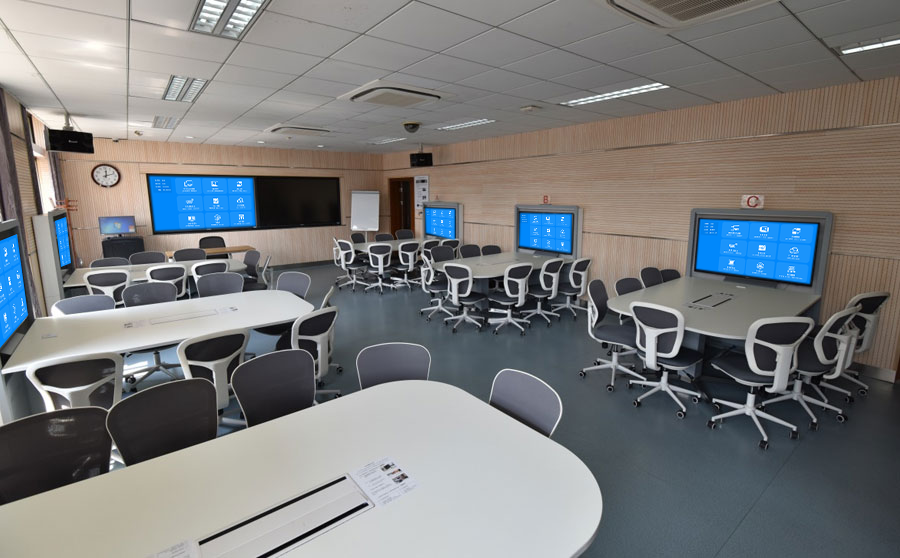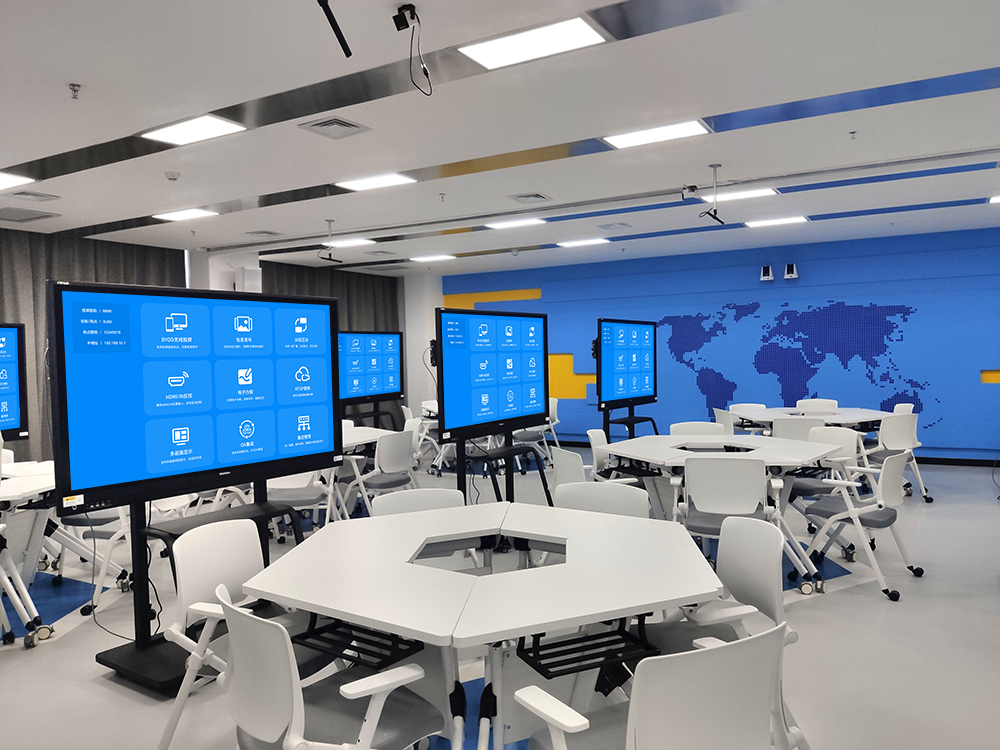Interactive Classrooms: Fostering Deeper, More Efficient Classroom Interaction
The interactive classroom solution uses technology to break the one-way teaching model of traditional education. Through device interconnection and intelligent design, it creates a multi-dimensional learning space for teachers, students, and peers, making knowledge transfer more vivid and the exchange of ideas more direct.
Core Device Configuration
The system uses a three-tiered architecture: “main screen + group screens + personal terminals.” The main screen is a 4K touch display that supports wireless screen mirroring from all systems, with a latency as low as 40ms. Each group is equipped with a 21.5-inch interactive screen that supports up to 6 groups working at the same time. Students’ phones, tablets, and other devices can connect quickly via a QR code or a direct protocol link, allowing even older devices to participate smoothly.
Key Interactive Features
- Real-time Feedback System: When a teacher launches a quiz from their terminal, student answers are aggregated on the main screen in just 2 seconds, generating an accuracy distribution and an analysis of incorrect options, with common mistakes automatically flagged. In a math class, for an incorrectly answered function problem, the system instantly pushes similar examples to students, enabling them to “correct mistakes on the spot.”
- Multi-Screen Collaborative Annotation: Teachers and students can use different colors to annotate on mirrored content. Teacher annotations sync to all terminals, and group discussion results can be pushed to the main screen for a split-screen display. In a Chinese language class, when analyzing a paragraph, the annotations from different groups are clearly visible for comparison, deepening understanding.
- Instant Resource Flow: Courseware and experiment videos can be pushed from the teacher’s terminal to a specific group or the entire class with a single click. Students’ handwritten solutions and creative proposals can also be quickly mirrored for sharing. This zero-delay resource transfer keeps the class rhythm tight.

Scenario Applications
- Theoretical Classes: The teacher mirrors courseware and annotates key points in real time and launches a quiz. The main screen displays a ranking of answers, increasing student focus by 50%. For difficult points, the teacher can mirror a student’s thought process from their device for a targeted explanation.
- Experimental Teaching: Students use their phones to film an experiment and mirror it to a group screen for slow-motion analysis of details. A model procedure can be pushed to the main screen, and the teacher can use the mirrored video to annotate the correct steps, increasing the standardization rate of lab operations by 60%.
- Cross-Group Discussions: Different groups working on the same topic can display their research findings on the main screen in a split view, annotating and adding to each other’s work. The teacher can use the main screen to summarize key points to reach a class-wide consensus, cultivating collaborative thinking.
Management and Assurance
- Minimalist Operation: Teachers can control devices with touch or voice commands and become proficient in 3 minutes, so teaching is not disrupted by technology.
- Security Control: Content mirrored by students must be approved by the teacher. The system supports locking irrelevant functions by class to prevent distractions.
- Data Consolidation: It automatically records interaction frequency and quiz data, generating a teaching analysis report that helps teachers optimize their teaching strategies.
This solution has been implemented in multiple schools, resulting in a 3-fold increase in classroom interaction frequency and a 70% increase in student participation. It has transformed interaction from a formality into a deep collaboration, truly activating classroom vitality.